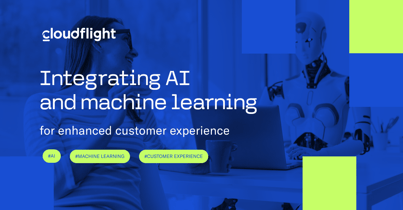Artificial Intelligence (AI) is by far one of the most praised trends in Silicon Valley. Yet, in the “real world”, opinions tend to be split into two camps: those who desire AI-driven personal assistants on the one hand, and those who fear that such AI solutions will steal their jobs in the future, on the other. Nevermind that Hollywood-like scenario though – the truth is that AI is already here, reading our emails, listening to our conversations, recognizing our faces, and even smelling our breath! AI is not a shiny addition. It is a must-have for any business innovations, and e-commerce seems to be in the avant-garde.

Today is all about data. Tech journalists like to say that it is “the new oil”, and no matter how corny it sounds, data is truly the most critical resource in the modern economy. Why? Nowadays, satisfying customers’ needs is not enough to increase sales and gain a competitive advantage; businesses must exceed customer expectations. Without data and – more importantly – its in-depth understanding, it is just alchemy that companies don’t believe in.
Netflix’s case proved it best. In 2011, when the company decided to buy the rights for the U.S. version of House of Cards, it wasn’t based on just intuition. Before Netflix green-lighted that TV show – as Neil Patel pointed out – it already knew that:
- a lot of users watched David Fincher’s movie “The Social Network” from beginning to end;
- the British version of “House of Cards” has been well received;
- those who watched the British version of “House of Cards” also watched Kevin Spacey films and films directed by David Fincher.
Each of these three factors “contained” a specific segment of users, and Netflix had a lot of users in all three of them.
Jonathan Friedland, the company’s chief communications officer, confirmed the data-based decision model. In a New York Times article, he said: “Because we have a direct relationship with consumers, we know what people like to watch, and that helps us understand how big the interest is going to be for a given show. It gave us some confidence that we could find an audience for a show like “House of Cards.”
Deriving business insights from your rough data is, however, still a challenge—a challenge that artificial intelligence, and its narrower discipline, machine learning, helps to face.
What is artificial intelligence (AI)?
One of Wikipedia’s definitions describes artificial intelligence as “a system’s ability to correctly interpret external data, to learn from such data, and to use those learnings to achieve specific goals and tasks through flexible adaptation.” Britannica expands upon it, adding that “the term is frequently applied to the project of developing systems endowed with the intellectual processes characteristic of humans, such as the ability to reason, discover meaning, generalize, or learn from experience.”
We already use AI widely. As Kurt Cagle addressed in Forbes: “AI is in the background, making suggestions, handling classification and identification, pulling together options for making decisions and in some cases making those decisions autonomously.”
AI is not only Siri. Autosuggestion mode in the browser, focus systems in modern cameras, spam filters, email categorization, plagiarism checkers, even the super-annoying Microsoft Office helper – Clippy – are all AI-based features.

Artificial intelligence is not a technology per se, but rather a set of technologies aiming at teaching computers how to handle multiple heterogeneous and sometimes abstract data simultaneously.
Within the sector of Artificial Intelligence, we can separate some subsets, such as:
Machine Learning (ML)
Machine learning is a subset of artificial intelligence that provides systems the ability to improve themselves without being explicitly programmed. It focuses on features that can access data and use it to look for patterns and make better decisions.
Deep Learning (DL)
It is a subset of machine learning that puts stress on neural nets. It allows machines to solve very complex problems even when using a data set that is very diverse, unstructured, and incomplete.
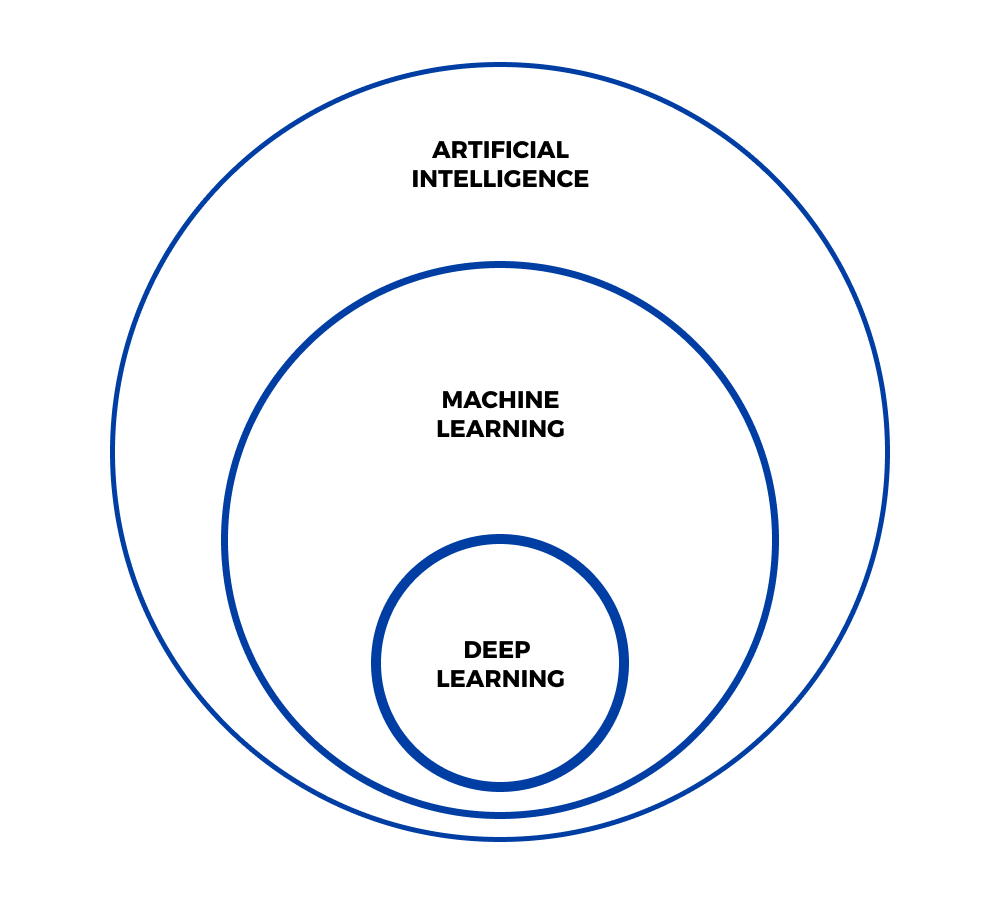
Benefits of AI in eCommerce
AI, as it can analyze data way more efficiently than a human brain, filters into literally all business sectors. But in eCommerce, it has already gained a very special place. Modern eCommerce companies need to know precisely the customer’s preferences, interests, and intents, to stay in business. Yet, it keeps getting more and more difficult, as the customer journey is becoming more sophisticated and granular.
Shoppers, even though they use multiple channels (i.e., social media, SMS, emails, mobile app, websites) to stay in touch with the brand, expect a consistent, personalized experience and the highest quality support across all of them.
According to McKinsey’s study, personalization lifts sales by 10% or more.
And artificial intelligence can abstract patterns – such as similarities between shoppers, purchasing behavior, or payment preferences – in the stream of continuously changing data generated across multiple touchpoints. It identifies the user’s intention and then delivers the right incentive to push him to the next stage in his customer journey. That way, by improving marketing processes, AI boosts sales.
No wonder, according to Business Insider, 85% of customer interactions will be handled without a human by 2020.
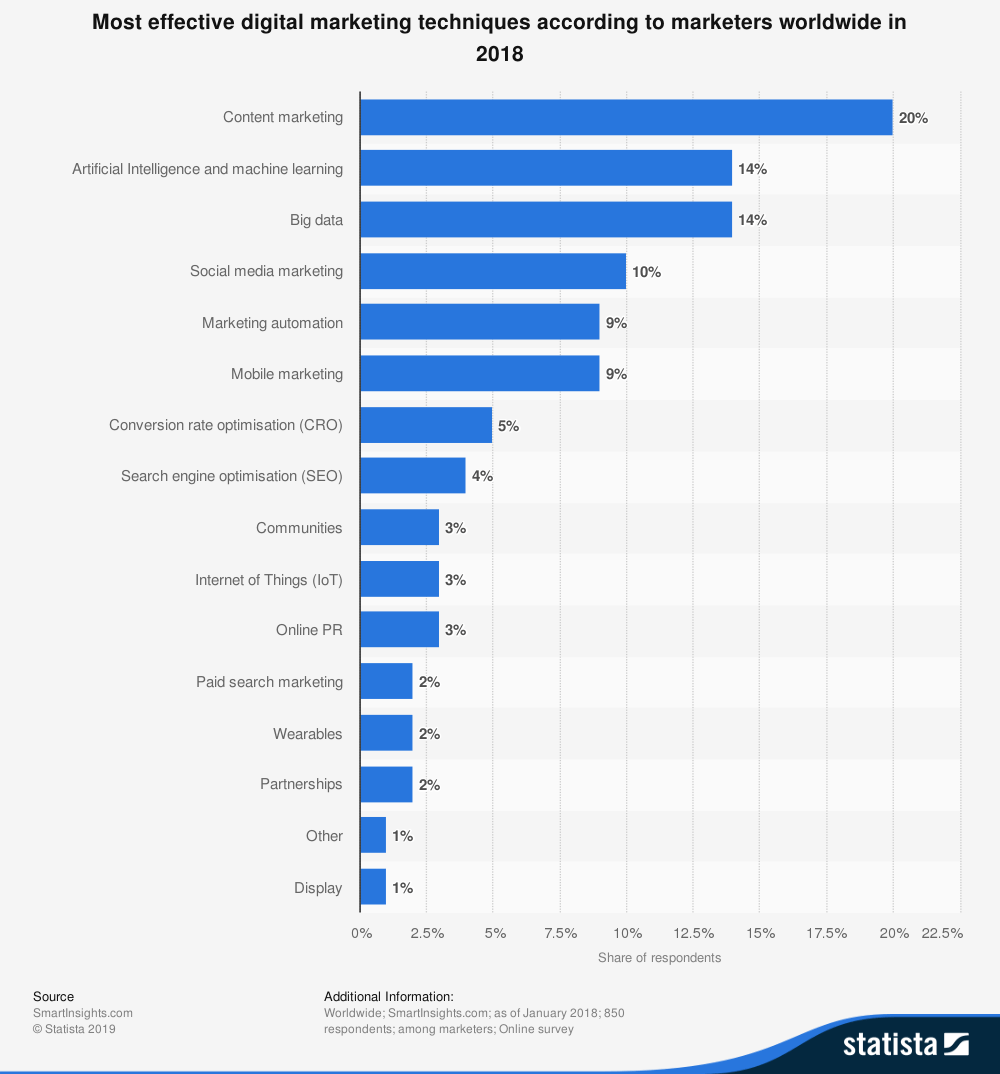
Examples of using artificial intelligence in eCommerce
Chatbots & virtual assistants
The most common use of AI is chatbots. These tools, designed to talk with customers and provide them with the most accurate solutions, are one of the hottest trends in marketing, which is natural as – according to Forbes – they increase sales by 67% on average.
The Juniper Research study “Chatbots: Banking, eCommerce, Retail & Healthcare 2018-2023”, found that the retail sector will gain the most benefits from chatbot technology. Juniper estimates that by 2023, over 70% of chatbots accessed will be retail-based.
Balenciaga, Givenchy and Lanvin, Sephora, Domino’s Pizza, eBay, Dutch Airlines, and Bank of America are just some of the brands that have already discovered the power of chatbots, proving that it is not limited to any specific category.
Chatbots help to find the right products or services (i.e., using image or face recognition), re-order user’s previous orders, track them, estimate the time of delivery, make transfers, pay debts, book appointments, and much, much more.
Customer Relationship Management (CRM)
CRM systems based on AI learn over time to forecast business results and identify potential bottlenecks with high accuracy. They can analyze not only digital data but also a conversation.
There are AI-based CRMs able to:
- record meetings and calls, obtain transcripts, and point out references to topics or phrases of specific concern like budget or pricing (e.g., Chorus);
- analyze speaking patterns and word choice, to detect callers’ emotions (e.g., Cogito);
- build natural-sounding content based on real data (e.g., Wordsmith);
- offer predictive analysis to identify at-risk deals, build a timetable for when sales are like InsideSales);
- allocate funds effectively to increase marketing ROI (e.g., 6sense).
Dynamic pricing
Some tools (e.g., Omnia or Minderest) using machine learning and data science can analyze user behavior, competitors’ prices, and market demand, compile the information with internally defined parameters, and display a dynamic pricing layer. It allows businesses to stay profitable all the time.
Visual & voice search
The search process is evolving, and words are not the only way to find items in stores. Shoppers can now search for items of interest by taking a picture on their phones, and AI tools deliver similar products based on color, texture, or shape. The trend is not fresh, but it is growing. In 2017, a report by Jumpshot and Moz confirmed that 26.79% of all searches across ten major properties had been for images.
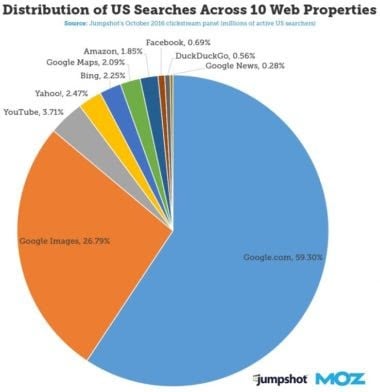
Fashion companies like Neiman Marcus, ASOS, and Nordstrom already appreciate it and have implemented visual search tools into their digital strategy.
Gartner shows that retailers that are early adopters of visual search have a chance to increase their digital commerce revenue by 30%.
Voice search – on the other hand – might become a crucial advantage for local businesses. Users who use voice search are more likely to search for services using the phrase “nearest vegan restaurant”, but eCommerce also can draw some profits from voice queries, since – according to Forbes – among the top of Alexa searches in 2017, were “ordering products” and “ordering food”.
According to ComScore, 50% of all searches will be done by voice by 2020.
Companies relying on AI
Nowadays, no industry can defer implementing AI tools, but – in addition to Netflix, which was mentioned above – Amazon deserves a special note.
AI in Amazon
Amazon was using machine learning algorithms from the very beginning and made them the core element of its modus operandi. Nowadays, every department tries to find the optimal way to utilize AI and ML for improving workflow. For example, by developing Alexa, Amazon explores the conversational commerce sector, trying to predict customers needs, help to purchase tickets, make restaurant reservations, or request an Uber ride. As one of the biggest search engines in the world, Amazon also uses AI and machine learning to deliver the most accurate search results and a customer to the next stage in his customer journey.
As Kathleen Walch, Managing Partner & Principal Analyst at Cognilytica, wrote in Forbes: “Amazon was one of the very early adopters of this pattern applying personalization and making recommendations across Amazon for the last twenty years. AI-enabled systems are increasingly blurring the lines of search and recommendation systems. By knowing which customer is searching for what product, AI will now make it possible to bring up very relevant results and personalized recommendations”.
AI in Alibaba
Alibaba, the biggest competitor of Amazon, also appreciates the power of AI. The Chinese company is developing its neural network chip and plans to form independent research and development teams to build up core technologies that support its vision.
“Alibaba’s success in commerce has outshone its light of technology over the past 18 years,” said Alibaba Group Chief Technology Officer Jeff Zhang at the summit “New Technology, New Future” in May 2018.
Alibaba invested more than 15 million dollars into seven research labs that will focus on artificial intelligence, machine learning, network security, natural language processing, and other technologies.
AI in Walmart
Wallmart, who, faced with Amazon’s invasion, was pushed the make an alliance with Google. Shoppers can now add products directly to their online carts by saying, “Hey Google, talk to Walmart.”
As Tom Ward, senior vice president at Digital Operations wrote in a Wallmart blog-post: Best of all, customers can be extra confident that we can quickly and accurately identify the items they are asking for with the help of information from their prior purchases with us”. The more you use it, the better we’ll get. For example, if a customer says, “add milk to my cart,” we’ll make sure to add the specific milk the customer buys regularly. Instead of saying “1 gallon of 1% Great Value organic milk,” they’ll simply say one word: “milk.”
That is just a drop in the ocean. Walmart also uses artificial intelligence and machine learning to improve its logistics processes and online checkouts, as well as the operation of its brick&mortar stores.
Summary
Artificial Intelligence will be a real game-changer in the eCommerce industry. Even though there are still some serious concerns about its use and future influence on society, it is already being used to great effect, helping customers on their way through the purchase path and enabling businesses to refine their offer automatically and intelligently, and there is no going back.
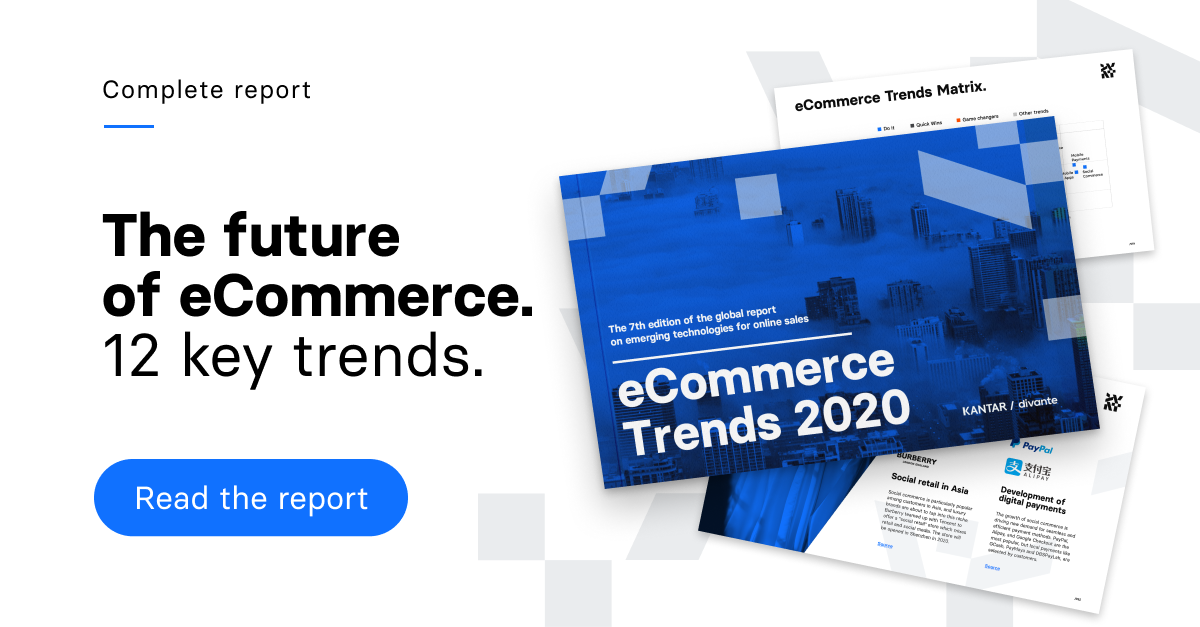
Published December 5, 2019





